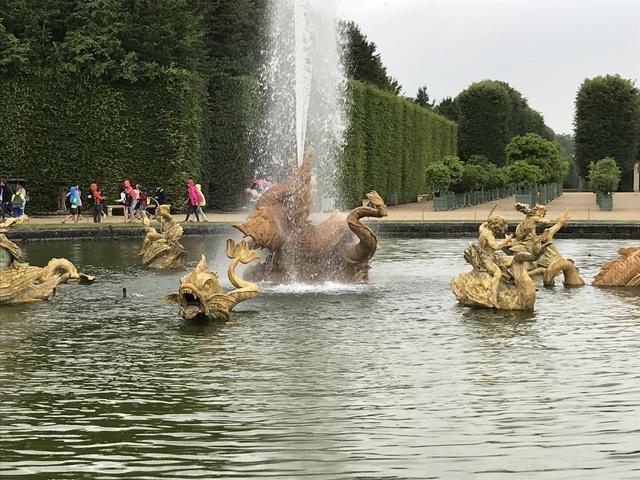Dragon Fountain

The Dragon Fountain, located in the magnificent gardens of the Palace of Versailles, is a stunning piece of art that captures a pivotal moment in Greek mythology. This masterpiece represents the legendary episode from the tale of Apollo, the Greek god of the sun, music, and prophecy, as he slays the monstrous serpent-dragon Python. The sculpture depicts Apollo, a young and powerful figure, aiming his arrow at the fearsome creature, symbolizing the triumph of light over darkness, good over evil.
Surrounding the central figure of Apollo are dolphins armed with bows and arrows, and swans riding on horses, creating a dynamic and captivating scene. The intricate details of the fountain, such as the flowing water and the majestic height of the main water jet reaching 27 meters, add to the grandeur and symbolism of the artwork. This fountain not only showcases Apollo's victory over Python but also signifies his role as the protector of knowledge and wisdom, as well as the patron of the arts.
Commissioned by King Louis XIV, also known as the Sun King, the Dragon Fountain holds a special significance in the history of Versailles. Louis XIV saw himself as a divine ruler, much like Apollo, and he believed in promoting the arts and culture as a way to showcase his power and influence. The placement of the fountain in the northern part of the garden was carefully chosen to highlight Louis XIV's association with Apollo and his belief in his own divine right to rule.
Visitors to the Palace of Versailles can marvel at the Dragon Fountain and appreciate the intricate craftsmanship and symbolism behind this iconic piece of art. As they wander through the meticulously landscaped gardens and gaze upon the majestic fountain, they can immerse themselves in the rich history and mythology that inspired its creation. The Dragon Fountain stands as a testament to the enduring legacy of Louis XIV and the artistic achievements of the French monarchy during the Baroque period.
© ChatGPT 3.5